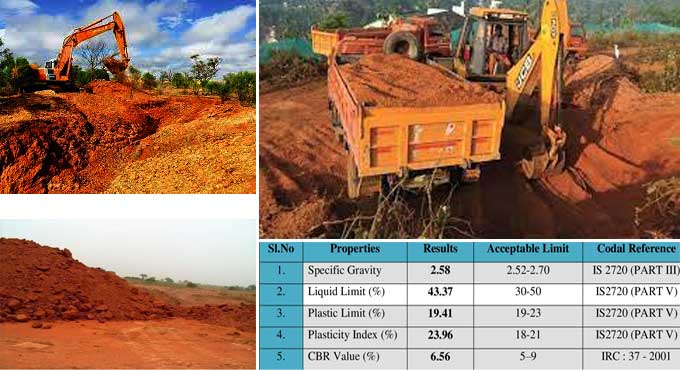
What Red Soil Is & Its Types in 2023
The red soil is rich in iron, aluminum, and lime. Most red soil has developed by weathering of incident crystalline igneous rocks. The red soil develops under deciduous and mixed forests, with thin organic and organic mineral layers resting on a yellowish brown leached layer sitting atop a deep red alluvium layer. Generally, ferric oxide is responsible for its color since it is derived from crystals.
Importance of Red Soil
Iron oxide is abundant in red soil, but nitrogen and lime are deficient. Limonite occurs as a hydrate form in the soil, which gives it a yellow color. The strength has been improved significantly, the imperviousness has been improved, and the workability has been improved. Porosity, water permeability, and split tensile strength are the criteria for measuring flexural strength.
Characteristics of Red Soil
The reddish color of red soil makes it distinguishable from other types. Tropical and subtropical regions have warm, humid climates, which are conducive to red soil. Farming is usually possible in this region because it is fertile. Iron oxide containing rocks weather into red soil as they age.
Red Soil Types
Red Loam Soil
Decomposed granite, gneiss charnockite, and diorite rock forms this red loam soil. There is a lack of concrete materials in these soils due to clods, porous, and a lack of concrete materials. Organic materials, nitrogen, and phosphorus are insufficient in these soils. Potash is present in sufficient amounts in these soils. Due to their infertility, red sandy loam soil is not suitable for agriculture.
Red-Yellow Soil
This type of soil in broad leaved forests is known as red-yellow soil. Subtropical humid regions are generally home to these types of forests.
An acid reaction can take place within these soils. Compared to other soils, these soils have lower humus content. Ferric hydroxide is responsible for the soil's red-yellow colour. These soils range in thickness between 30 to 70 cm & vary in thickness from place to place. New Zealand, south-eastern Australia, and China all have these soil types.
Red Gravel Soil
In the topmost layer of this soil, there is usually 20% gravel; sometimes there is more than 20%. They are scattered throughout the soil and are distributed evenly. Due to the gravel content of this soil, plants cannot grow properly. A gravel barrier prevents plants from growing.
Additionally, red gravel soil cannot support plants because it lacks nutrients. In the soil, gravel penetrates the roots and damages the plants. The soils on these properties are incompatible with agriculture. Soils with gravel are broken up & oxygen is released into the air through air pockets. Ornamental grasses, herbs & perennial plants can grow in these soil types.
Red Laterite Soil
It is also considered to be a brick when it comes to red laterite soil. These soils are usually found in hot and humid tropical areas, where iron and aluminum are abundant. Its red color comes from the iron oxide content in the soil; this mineral gives soils their color. Intensive and prolonged weathering of the parent rock results in the development of these soils. Between the tropics of Cancer and Capricorn is where you can find the majority of laterites.
Red Sandy Soil
They tend to have an acidic content, are low in nutrients, light, warm, and dry. Due to its high proportion of sand and low amount of clay, red sandy soil is generally known as light soil. It is easy to work with these soils because their drainage is usually quick. Due to the lack of nutrients and organic matter in these soils, these soils cannot be cultivated. Soil types such as these have poor fertility and occur in arid and semi arid regions with high rainfall.
Red Clay Soil
There is no calcareous material present in red clay soils, making them mineral soils. They also have a saturation base less than 35% throughout the soil and 10% fewer weather-able minerals in the very top layer. Tropical regions with humid temperatures are known to have red clay soil. A number of regions, such as Africa, Asia, and South America, are home to them.
To get more details, watch the following video tutorial.
Video Source: Epic Machine


